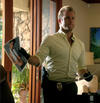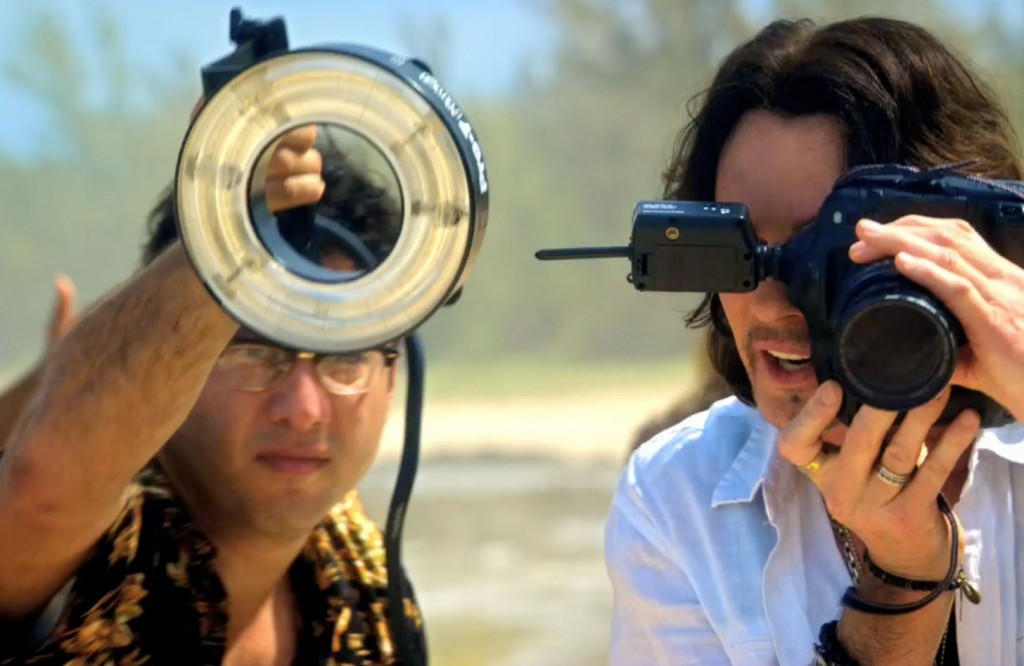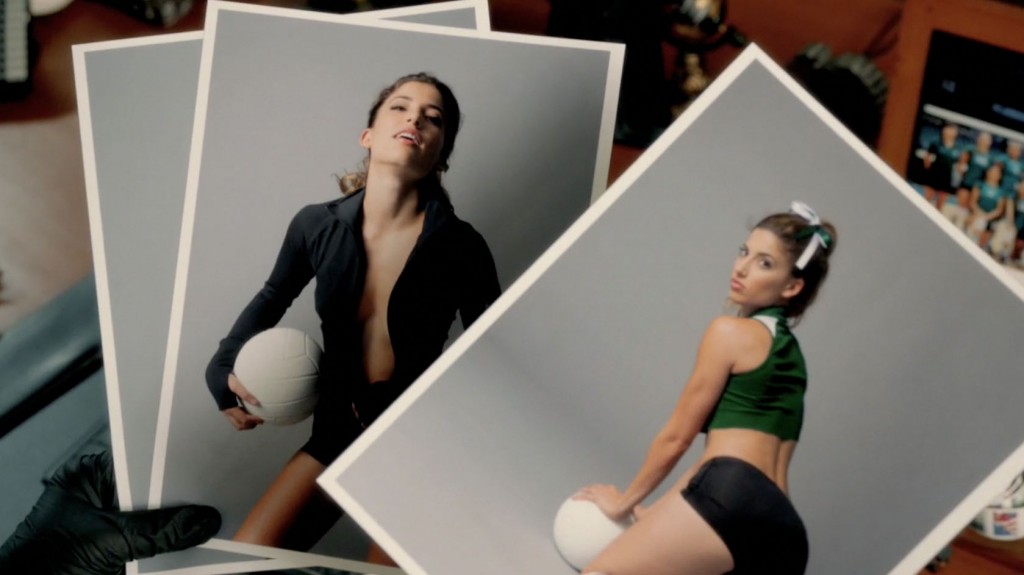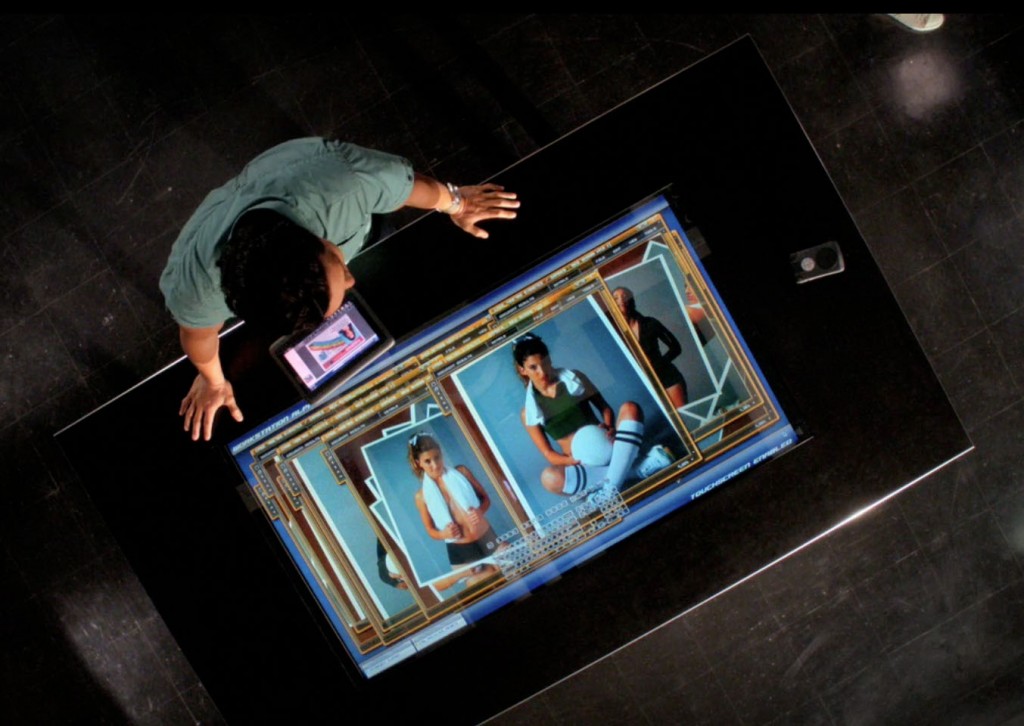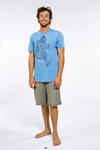
As we rolled our gear into the darkened garden center, the overwhelming smell of chicken manure filled the air. The earthy yet foul odor, as disgusting as it may sound (or smell), helped soothe the pregame jitters I usually get when I show up on a location and need to build a studio. What made this job different was that I was shooting in the garden center of a well known big box store in the middle of the night. Well, not that late but when you’re call time is at 10pm, it’s pretty late to be thinking about setting up a seamless, lighting it and bringing your subject to stage—ready to work–at midnight.
Well, it’s all in a day’s work for me. I never know what strange request I’ll have and hours I’ll need to be available. I was assigned by a client (who I should probably keep confidential as the article isn’t published yet) to create a portrait of an associate who works at said big box store. This particular client was featuring an associate, a Samoan woman, who has become famous for her local style chicken wings recipe. The problem was the associate didn’t show up till 11pm and they required I shoot her on location during her shift. The client wanted the subject shot on a white seamless backdrop which would be stripped away and placed on a white page with her recipe printed next to her. I just had to fit the subject onto the provided layout and ensure I had a quality shot to deliver.
Lighting a portrait can be tricky. There are as many ways to light a portrait as there are light modifiers. In my assistant days in NYC , I pushed to perfect the perfect light. I learned how to use studio strobes (and hot lights) in just about every conceivable situation and location. Those days were invaluable, as they helped me understand my own work and how to approach different situations. I learned how to light everything from a tiny tube of lipstick to an entire warehouse. I learned to get F16 from corner to corner, top to bottom, including the floor, on a white cyclorama. My light meter and I were best of friends in those days. I loved to work out light ratios and I reveled in my craft. A photo editor once told me it was obvious I had worked with Nathaniel Welch as she saw the same approach to light that he takes in his work. There wasn’t a prouder moment than to hear this from a big time photo editor. It was then, that I realized how far I had come from my assistant days. I wish I had learned more, but you can only assist so much before it’s time to do it yourself. Again, I think any budding photographer out there needs to assist in the big cities. Books and your own small time assignments can’t teach you what you can learn from the pros in the big cities.
The one fun drawback to assisting at the top levels was the access to gobs of equipment we had at our fingertips. At times, I probably had been in charge of $50,000 or more of strobe equipment and had access to so much more –Broncolor and Profoto mostly. It now seems insane–I don’t have this type of equipment at my fingertips any longer–but I do own quite a nice arsenal of gear. And fundamentally, the study and methods used in lighting has changed over the years, as well as the camera gear itself. In my earlier days, I worked with photographers who shot with large medium format systems and which required powerful lights sources to shoot at small apertures. I remember working with 4800ws strobe packs and bi tube heads. Now, with DSLR cameras, you can pop on a 60ws on camera flash and photoshop your effects. My how things have changed. A lot about lighting that used to require the most acute hands-on skill and craftsmanship can now be done on a computer with a slim collection of modern software–pirated at best.
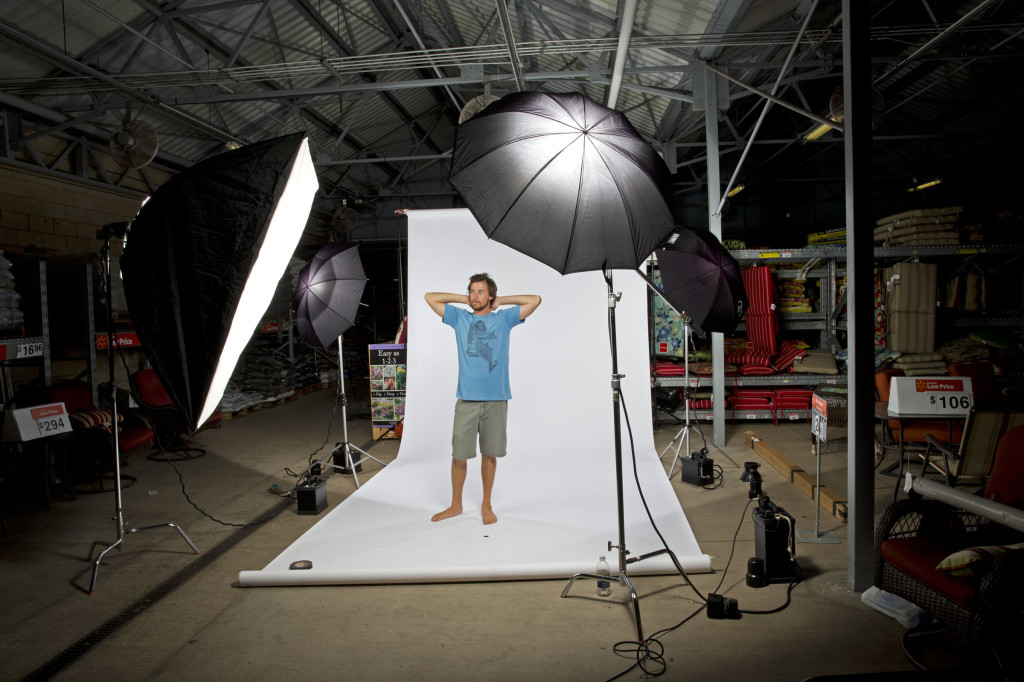
My lighting scenario was pretty basic as I had to light the subject with a nice broad but specular light. I opted for a Photex umbrella as the main light but fill it in with a Chimera large softbox from the side. Umbrellas are one of the most classic lighting tools available and frankly, one of the easiest to travel with to a location. If used a certain way, umbrellas cast a dramatic light wrapping around the subject with a sharp drop off and deep shadows. Sadly, the client wanted a fairly flat light with little drama so the large soft box was the filler to balance everything out. The 9′ white seamless was lit by two satin umbrellas and everything was powered by Profoto. Profoto is the professional standard. Sure, everyone raves about what an on camera flash can do but try to light a 9′ foot seamless with two Canon 580s. When I know the art director wants to strip the background out of the shot, I don’t worry too much about being 100% perfect but will strive to get my background nice and clean.
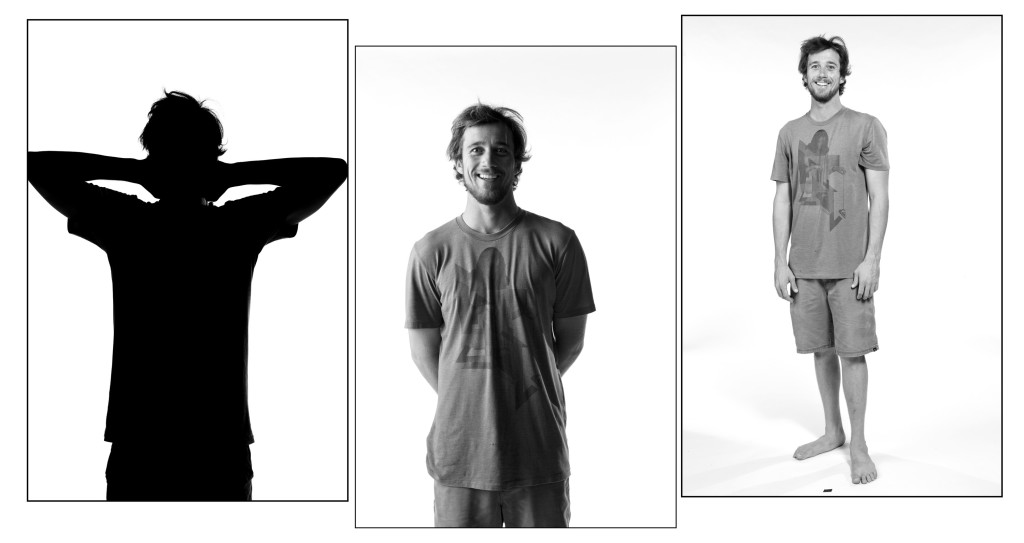
Paul, my surfer and dog loving assistant, modeled form my light tests and I found I had great examples of how I used multiple light sources to get the right light. The first light is to check how the back ground lights affect my subject. The second shot is to see how the Chimera fills on camera left and the last picture shows all the lights working together. The light worked well for our circumstances and it does highlight Paul’s perfectly flat feet. I can’t get enough of those boats he walks around on. He seems more suited for living in water than on land. Well, maybe on land, possibly like the base of a tree. A big tree mind you. Paul has become one of my better friends and for me to call him an assistant feels like I belittle him. He’s not a photographer by trade but understands what I need to get done. What he lacks in technical experience he makes up in people skills and being very bright…but more so, his friendship. Besides, I’d love to be a Hawaiian surfer dude, flat feet and all.
I did shoot with my newly acquired Canon 1Dx and the new version of the Canon 24-70mm F2.8 lens. The combo is really nice; I clearly see the advancement of Canon’s newest flagship camera and lens. The metering is superb and the handing is pretty nice. I do have to say the older Canon 1Ds Mark III is a great camera but the 1Dx is a vast improvement.
So onto my associate, who I can’t show you, so you’ll just have to imagine Paul holding a plate of chicken wings, Samoan chicken wings. We got our shot done pretty quickly with a little tough love wrangling to ensure the picture was useable. It was a tough night but we were able to finish by 1am. It took us about an hour and change to set up our seamless and lights but took all but 20 minutes to get the hell out of dodge. We ended the night with the taste of Samoan on our lips and the smell of crap up our noses. Luckily, both wash off.
